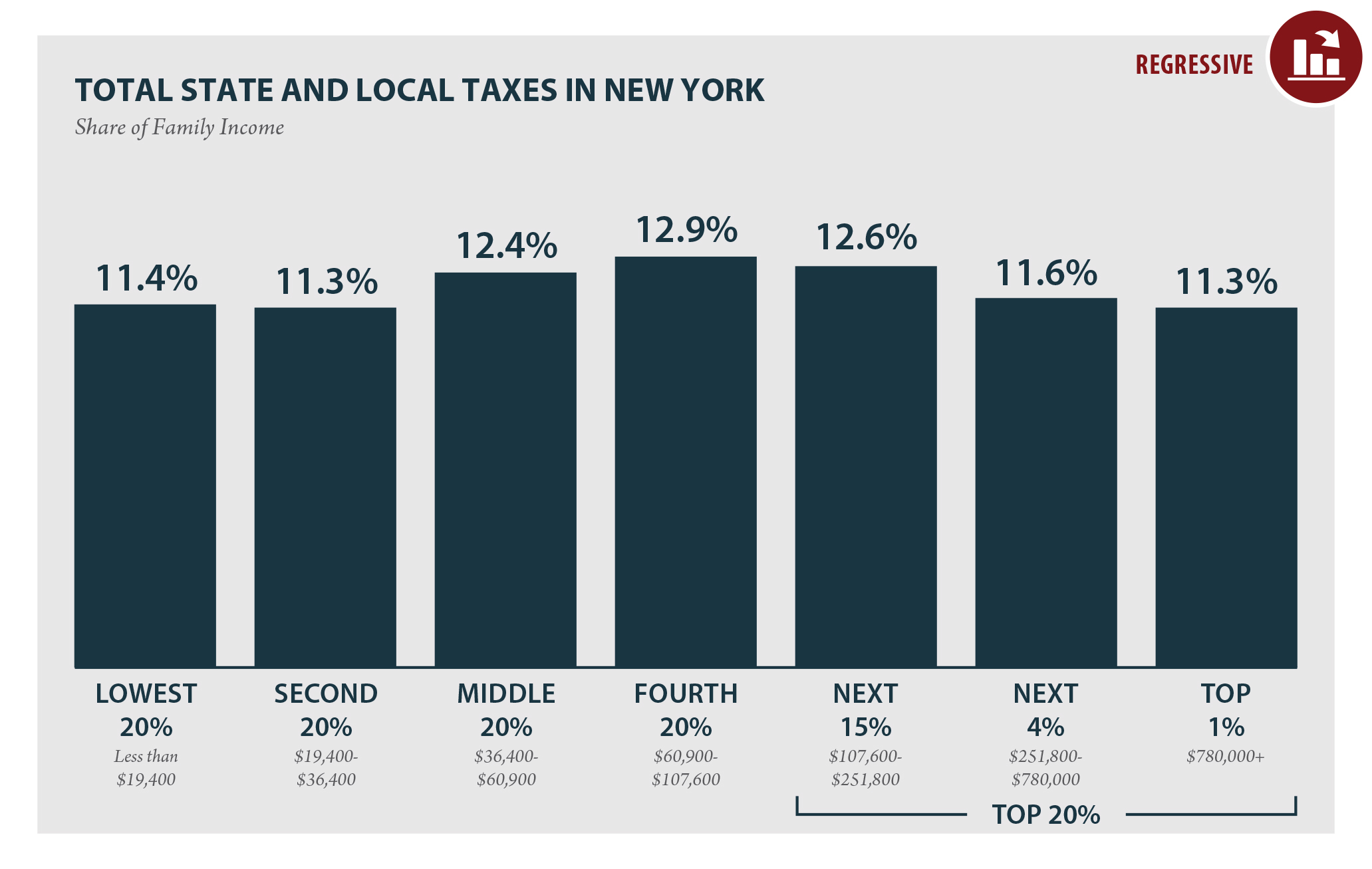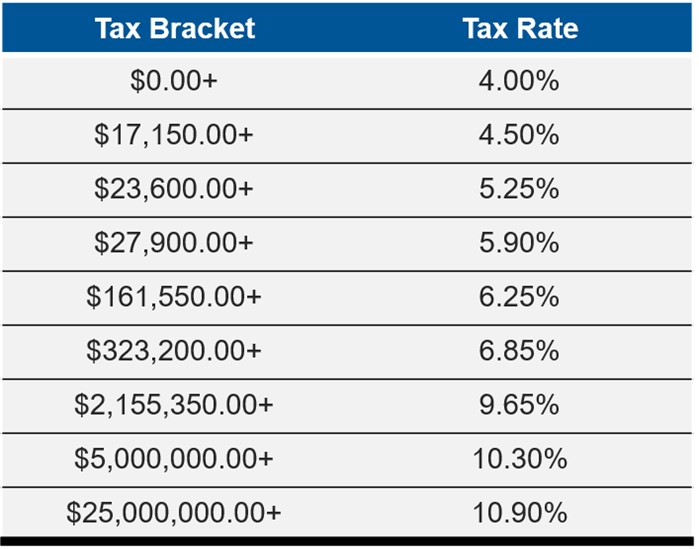New York State is renowned for its progressive tax structure, offering a range of income tax rates tailored to different income brackets. Understanding the intricacies of the New York State income tax rate is crucial for residents and businesses alike. With its diverse economic landscape, the state has implemented a tax system designed to cater to the financial needs of its population while ensuring fiscal responsibility. This guide will delve into the specifics of New York's income tax rates, shedding light on how they affect taxpayers and what changes to expect in the coming years.
The New York State income tax rate varies depending on an individual's income level, making it essential for taxpayers to familiarize themselves with the brackets and corresponding rates. As of 2023, the tax rates have been updated to reflect changes in the economic climate and legislative adjustments. By staying informed, taxpayers can better plan their finances and avoid potential pitfalls associated with tax obligations. This article aims to provide clarity and actionable insights into the New York State income tax system.
As we explore the nuances of the New York State income tax rate, it's important to consider the broader implications for both individuals and businesses. The state's tax policies are designed to promote economic growth while ensuring equitable contributions from all income levels. By understanding the tax brackets and rates, taxpayers can make informed decisions and optimize their financial strategies. Let's dive into the details and uncover the intricacies of the New York State income tax rate.
Read also:Where To Watch The Secret Lives Of Mormon Wives A Comprehensive Guide
What Are the Current New York State Income Tax Rates?
As of 2023, New York State has established a progressive income tax system with rates ranging from 4% to 10.9%. These rates are applied to different income brackets, ensuring that higher earners contribute a larger percentage of their income. The tax brackets are adjusted annually to account for inflation and changes in the cost of living. Understanding these rates is essential for taxpayers seeking to manage their finances effectively.
For instance, individuals earning up to $8,500 are taxed at a rate of 4%, while those earning between $8,501 and $11,700 are taxed at 4.5%. As income levels increase, so do the tax rates, with the highest earners facing a rate of 10.9%. This progressive structure ensures that all residents contribute fairly to the state's revenue, supporting vital services and infrastructure.
How Does the New York State Income Ta Rate Impact Residents?
The New York State income tax rate has a direct impact on residents' disposable income and financial planning. By understanding how the tax brackets apply to their earnings, individuals can better estimate their tax liabilities and plan accordingly. For example, a resident earning $50,000 annually would fall into multiple tax brackets, with each portion of their income taxed at the corresponding rate.
Additionally, the state offers various deductions and credits that can help reduce the tax burden for eligible taxpayers. These include the Earned Income Tax Credit, Child Care Credit, and School Tax Relief Credit, among others. By taking advantage of these opportunities, residents can maximize their savings and improve their financial well-being.
What Are the Tax Brackets for New York State Income Ta Rate?
The tax brackets for New York State income tax rate are structured to accommodate a wide range of income levels. As of 2023, the brackets are as follows:
- $0 - $8,500: 4% tax rate
- $8,501 - $11,700: 4.5% tax rate
- $11,701 - $25,000: 5.25% tax rate
- $25,001 - $200,000: 5.97% tax rate
- $200,001 - $1,077,550: 6.85% tax rate
- $1,077,551 - $5,000,000: 8.82% tax rate
- $5,000,001 and above: 10.9% tax rate
These brackets ensure that the tax system remains fair and equitable, with higher earners contributing a larger share of their income. By understanding these brackets, taxpayers can better estimate their tax liabilities and plan their finances accordingly.
Read also:Princess Diana Death Theories Exploring The Truth Behind The Tragedy
Why Is Understanding the New York State Income Ta Rate Important?
Understanding the New York State income tax rate is crucial for both individuals and businesses operating within the state. For individuals, it helps in budgeting and financial planning, ensuring that they can meet their tax obligations without compromising their financial stability. For businesses, it aids in accurate financial forecasting and compliance with state regulations.
Moreover, a clear understanding of the tax rates allows taxpayers to take advantage of available deductions and credits, reducing their overall tax burden. This knowledge empowers residents and businesses to make informed decisions and optimize their financial strategies, contributing to the state's economic growth and stability.
What Are the Deductions and Credits Available Under the New York State Income Ta Rate?
New York State offers a variety of deductions and credits to help taxpayers reduce their tax liabilities. These include:
- Earned Income Tax Credit
- Child Care Credit
- School Tax Relief Credit
- Property Tax Credit
By leveraging these deductions and credits, taxpayers can significantly lower their tax bills and enhance their financial well-being. It's important for residents to stay informed about these opportunities and ensure they meet the eligibility criteria to maximize their savings.
How Can Taxpayers Optimize Their New York State Income Ta Rate?
Taxpayers can optimize their New York State income tax rate by staying informed about the latest tax laws and regulations. This includes understanding the tax brackets, deductions, and credits available to them. By accurately estimating their tax liabilities and taking advantage of available savings opportunities, taxpayers can improve their financial health and reduce their overall tax burden.
Additionally, consulting with a tax professional or using tax preparation software can help ensure compliance and maximize savings. Staying organized and maintaining accurate records is also crucial for effective tax planning and management.
How Has the New York State Income Ta Rate Evolved Over Time?
The New York State income tax rate has undergone several changes over the years, reflecting shifts in economic conditions and legislative priorities. Initially introduced in the early 20th century, the tax system has evolved to become more progressive, with rates and brackets adjusted to accommodate changing income levels and cost of living.
Recent years have seen significant adjustments to the tax brackets and rates, with a focus on reducing the burden on middle-class families and promoting economic growth. These changes highlight the state's commitment to ensuring equitable contributions from all income levels while supporting vital services and infrastructure.
What Are the Future Projections for the New York State Income Ta Rate?
Looking ahead, projections indicate that the New York State income tax rate will continue to evolve in response to economic conditions and legislative priorities. Potential changes may include adjustments to the tax brackets and rates, as well as the introduction of new deductions and credits to support residents and businesses.
Staying informed about these developments is essential for taxpayers seeking to manage their finances effectively. By keeping abreast of changes and updates, residents can ensure compliance and optimize their financial strategies, contributing to the state's economic growth and stability.
What Resources Are Available for Understanding the New York State Income Ta Rate?
Taxpayers have access to a wealth of resources to help them understand the New York State income tax rate and its implications. These include:
- New York State Department of Taxation and Finance website
- Tax preparation software and services
- Professional tax advisors and consultants
By utilizing these resources, taxpayers can gain a comprehensive understanding of the tax system and make informed decisions about their financial planning and management.
Final Thoughts on New York State Income Tax Rate
In conclusion, understanding the New York State income tax rate is essential for residents and businesses seeking to manage their finances effectively. By staying informed about the latest tax laws and regulations, taxpayers can ensure compliance and optimize their financial strategies. With a progressive tax system designed to promote equity and support economic growth, New York State continues to evolve its tax policies to meet the needs of its population.
As we look to the future, it's important for taxpayers to remain vigilant and proactive in their approach to tax planning and management. By leveraging available resources and staying informed about changes and updates, residents can ensure they are making the most of their financial opportunities while fulfilling their tax obligations.
Table of Contents
- Introduction
- What Are the Current New York State Income Tax Rates?
- How Does the New York State Income Ta Rate Impact Residents?
- What Are the Tax Brackets for New York State Income Ta Rate?
- Why Is Understanding the New York State Income Ta Rate Important?
- What Are the Deductions and Credits Available Under the New York State Income Ta Rate?
- How Can Taxpayers Optimize Their New York State Income Ta Rate?
- How Has the New York State Income Ta Rate Evolved Over Time?
- What Are the Future Projections for the New York State Income Ta Rate?
- What Resources Are Available for Understanding the New York State Income Ta Rate?


